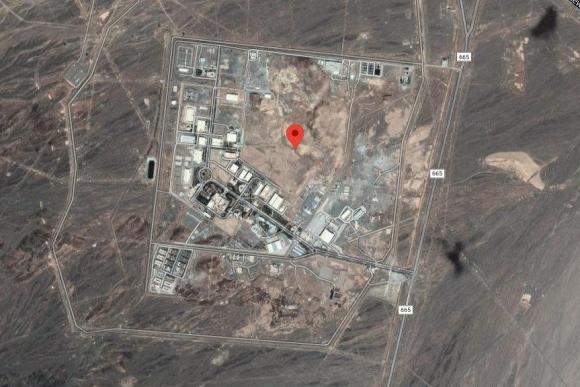On Friday 3 July, the authorities of the Islamic Republic of Iran admitted that at the Natanz site, located in a desert area about 250 kilometers south of Tehran, an accident had occurred the previous day which caused a fire to an infrastructure present there (but the images released by the same authorities would suggest that an explosion would also have occurred), fortunately without causing victims (and spill of radioactive material, as stated in this regard by the International Atomic Energy Agency).
The causes of the accident have already been identified by the investigators, however they will not be made public (at least for the moment) for safety reasons. It also appears to be the third incident of the same type in Iran in about a week.
The mystery deepens if one considers that the Natanz site is not a "simple" nuclear power plant but would host an installation in which the enrichment process of uranium would take place, which is the basis of the Iranian nuclear program. In particular, the aforementioned photo would portray the surface portion of an underground installation in reinforced concrete resistant to aerial bombing, which would house the centrifuges used to carry out the aforementioned enrichment process.
While this program is entirely legitimate for the Republic of Iran, within the international community some countries believe that it actually has the purpose of equipping Iran with nuclear weapons. For this reason, it is not surprising that, in 2010, the same site has already suffered a sabotage that caused a serious setback to the nuclear program, the result of a daring cyber and intelligence operation, planned and conducted in cooperation between the US and Israel (v. article).
In this regard, some newspapers, citing anonymous Iranian sources, report that the new incident was also caused by a cyber action conducted by Israel, in response to the cyber attack suffered by the local critical infrastructures for the distribution of drinking water, which occurred a few weeks ago and attributed to Iran (this attack, fortunately contained by the Israeli cyber security units, could have caused the alteration of the chlorine concentration in the water, with serious consequences for the population).
In addition, a few hours before the incident was known, the unknown hacker group "Cheetahs of the Homeland" (self-styled military organization of the Iranian regime dissidents) claimed responsibility for the alleged cyber attack on the Natanz site, communicating it in advance to the branch in BBC Persian language.
Reality? Screening? Propaganda?
The fact is, that the head of the Iranian civil defense, during a speech on TV, felt the need to specify that, if it were proved that it was a cyber attack, there would certainly be legitimate retaliation.
As often happens in these cases, we will have to continue to follow the story carefully, trying to extricate ourselves from anonymous sources and official statements and keeping in mind that, probably, the truth will never be known.
PS: if any reader is curious or skeptical about the fact that a cyber attack can cause a fire or even an explosion, among the material available on the net, I recommend reading something on Project Aurora (Wikipedia) and watch the related video (YouTube).
Then take into consideration that we are talking about a project dating back to the "distant" 2007 and imagine that the object of the experiment is a battery of centrifuges for the enrichment of uranium, rather than a large diesel engine.
Is it just fantasy? Evidently not.
Sources:
https://www.forbes.com/sites/kateoflahertyuk/2020/07/04/stuxnet-2-iran-h...
https://www.timesofisrael.com/report-israeli-cyberattack-caused-iran-nuc...
https://www.aljazeera.com/amp/news/2020/07/iran-declines-disclose-fire-n...












